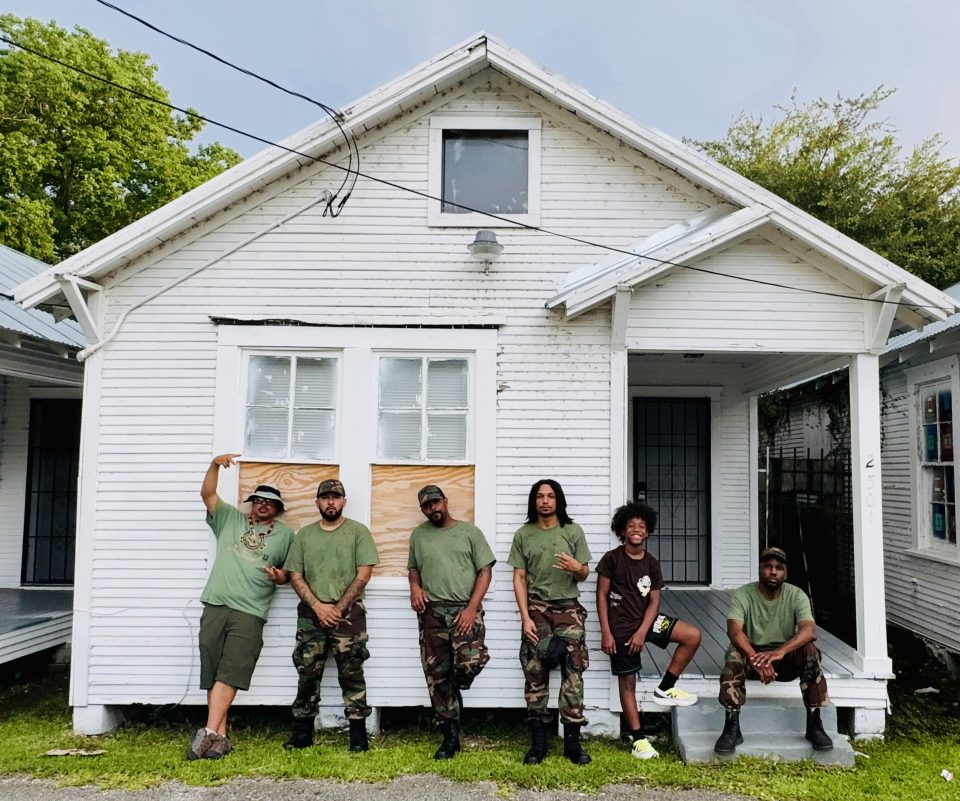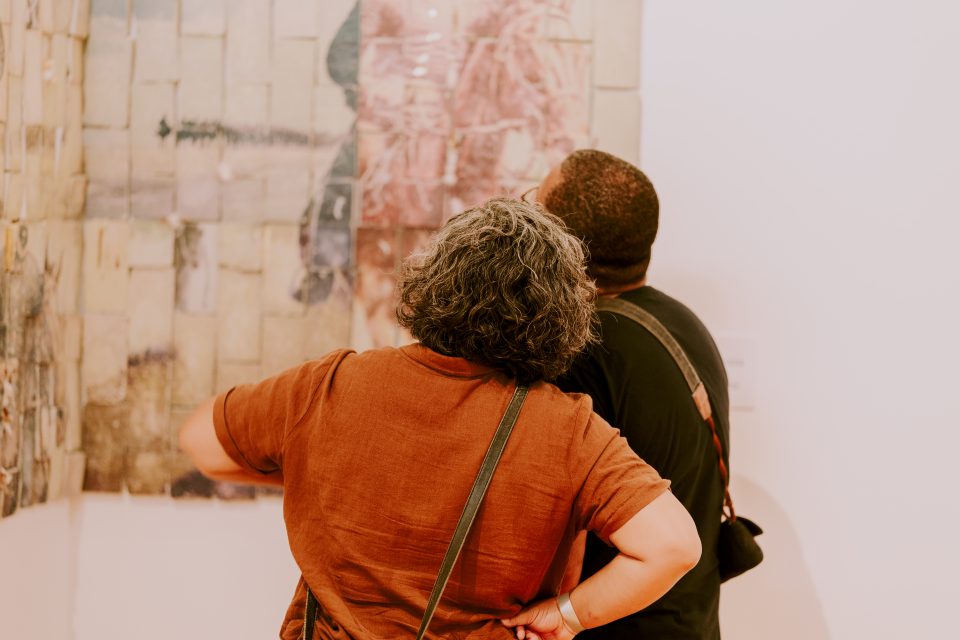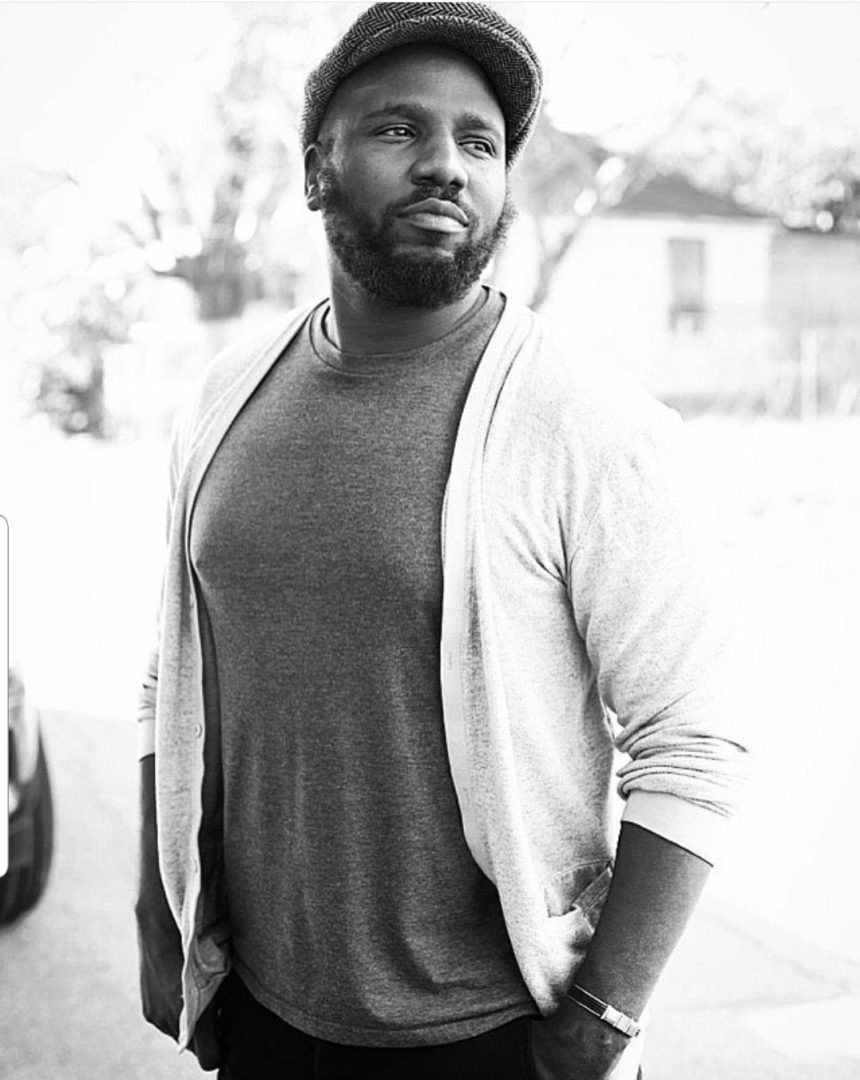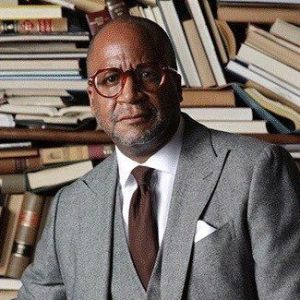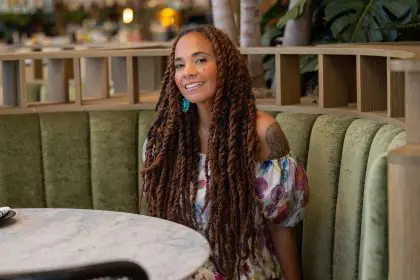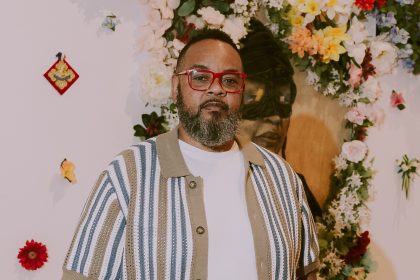Brian Ellison sees the march of the United States Colored Troops not just as military discipline, but as a form of resistance rooted in African diasporic traditions. The Houston-based conceptual and performance artist brings this vision to life in the Buffalo Soldiers National Museum’s “Terms & Conditions: The Promise vs. Reality,” fusing historical imagery with modern sound and motion to create a layered meditation on identity, service, and survival. His filmed performance transforms the soldiers’ regimented movements into a ritual that connects past and present expressions of Black resilience.
Known for capturing the richness of everyday Black life while examining themes of gentrification, resilience, and love within Black communities, Ellison approaches art as both social responsibility and community engagement. His installation honors the spirit of Juneteenth by celebrating the joy that lives alongside struggle—the camaraderie that has sustained Black communities through centuries of conditional freedom. Drawing from the principle of Sankofa, his work reaches back to bring forward, imagining new possibilities for healing and reclamation while honoring those who served with the promise of belonging, only to return home to a nation that still wouldn’t accept them.
Can you describe your artwork featured in the exhibition and walk us through your creative process?
Through archival research and choreography, I reimagined their disciplined march as both ritual and resistance connecting it to African diasporic traditions and present-day expressions of resilience. The work fuses historical imagery with modern sound and motion to create a layered reflection on identity, service, and survival.
How does your piece speak to the meaning and legacy of Juneteenth?
This work reflects the spirit of Juneteenth through its celebration of perseverance and community. Even in the face of oppression and uncertainty, Black people have always found ways to move, to dance, to march together in rhythm. My installation honors that resilience it’s about the joy that lives alongside the struggle, the sense of camaraderie that has always sustained us.
What role do you believe art plays in preserving and communicating Black culture and history?
Art has always been the compass guiding people back to their humanity. For Black communities, it’s how we remember, how we resist, and how we reimagine. Artists serve as catalysts for truth-telling, holding mirrors up to the world and reminding it of stories too often left out of textbooks.
How does your work reflect or challenge the social realities we live in today?
I wouldn’t say it challenges reality as much as it exposes it. My work pulls back the facade—it shows the unfiltered truth. A lot of people move through life believing that if they don’t see something, it doesn’t exist. My work asks them to look again.
Do you see your piece engaging with themes of Afrofuturism or reimagining Black futures?
Absolutely. My work often draws from the principle of Sankofa—reaching back to bring forward. I believe there’s a futurism present in this piece, not in a science fiction sense, but in how it imagines healing, reclamation, and new possibilities. It’s rooted in history but looks toward what’s next.
What personal stories or emotions did you draw from when creating this work?
I imagined myself as a young Black boy, being sent off to war with promises of care and belonging—only to return home to a nation that still wouldn’t accept me. I thought about the men who came back broken, carrying undiagnosed PTSD, and how that trauma echoed through their families. That grief, that transformation, that silence—it all informed the emotional weight of the piece.
